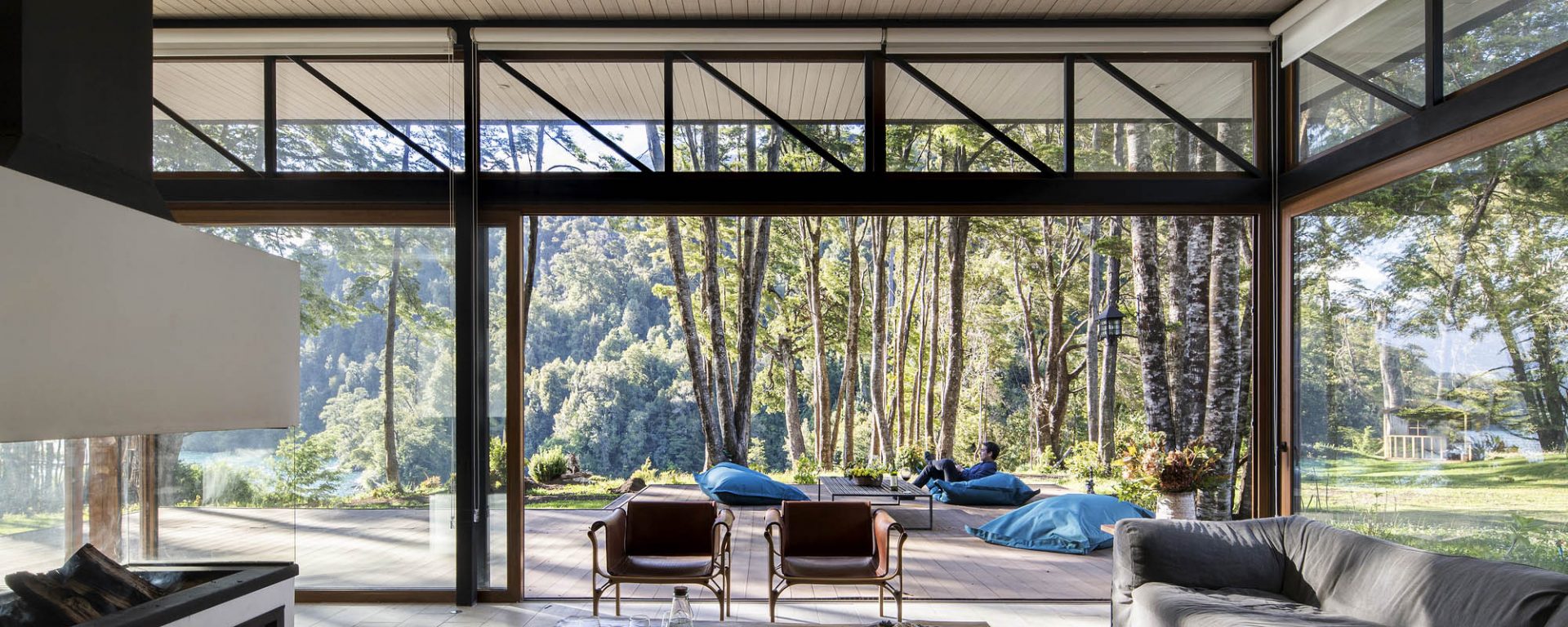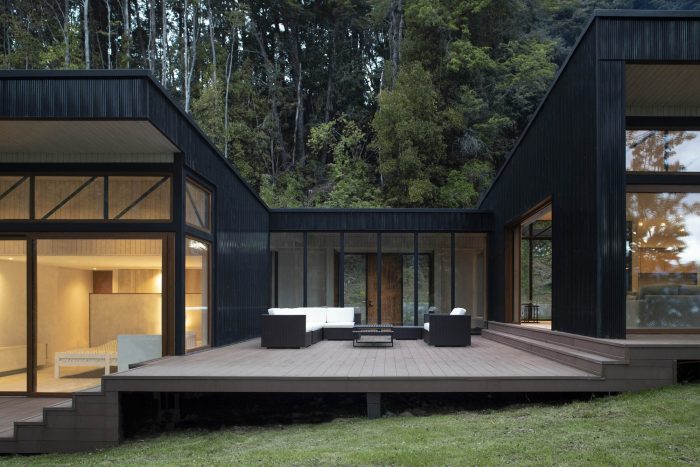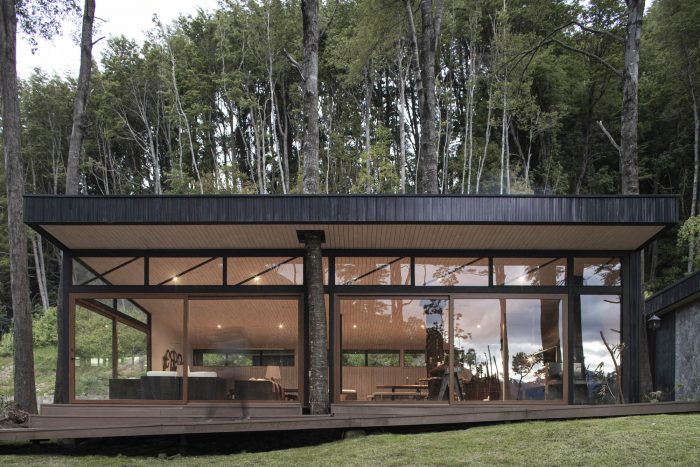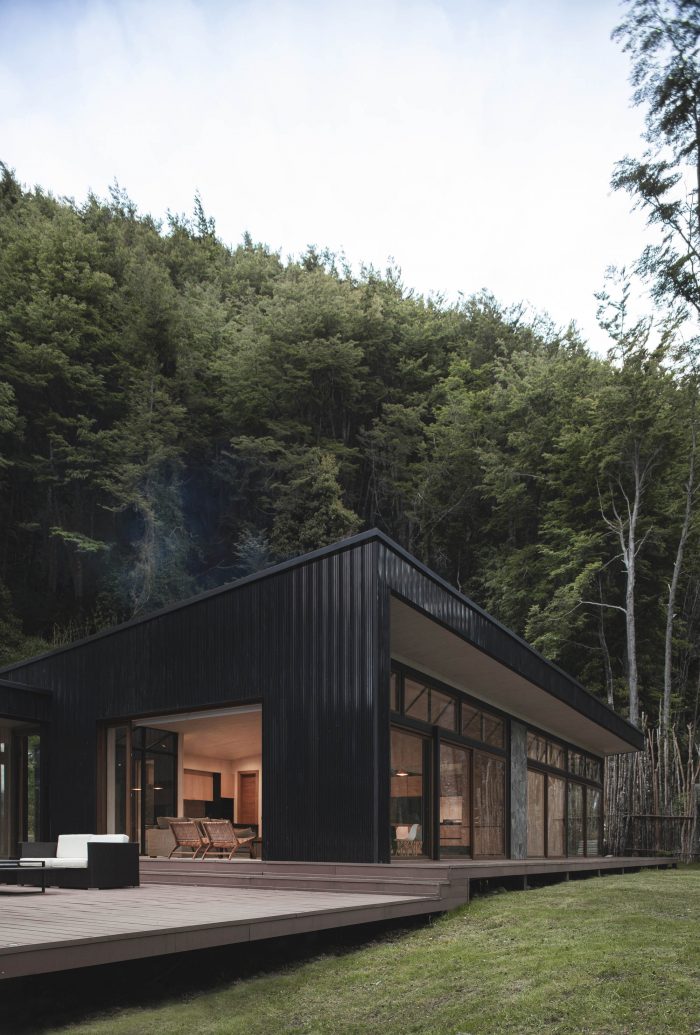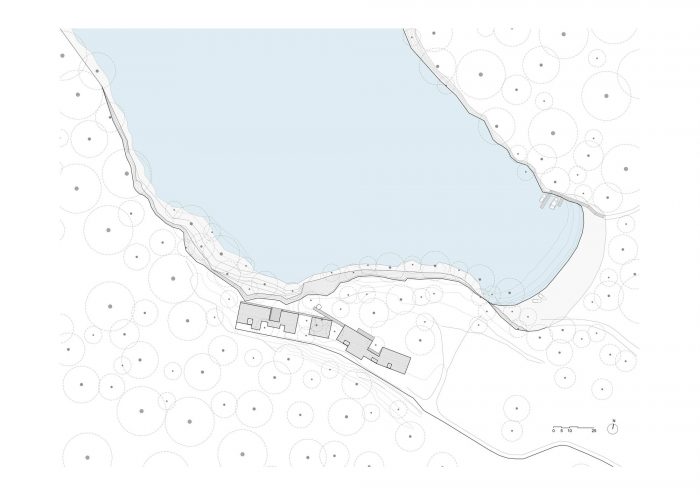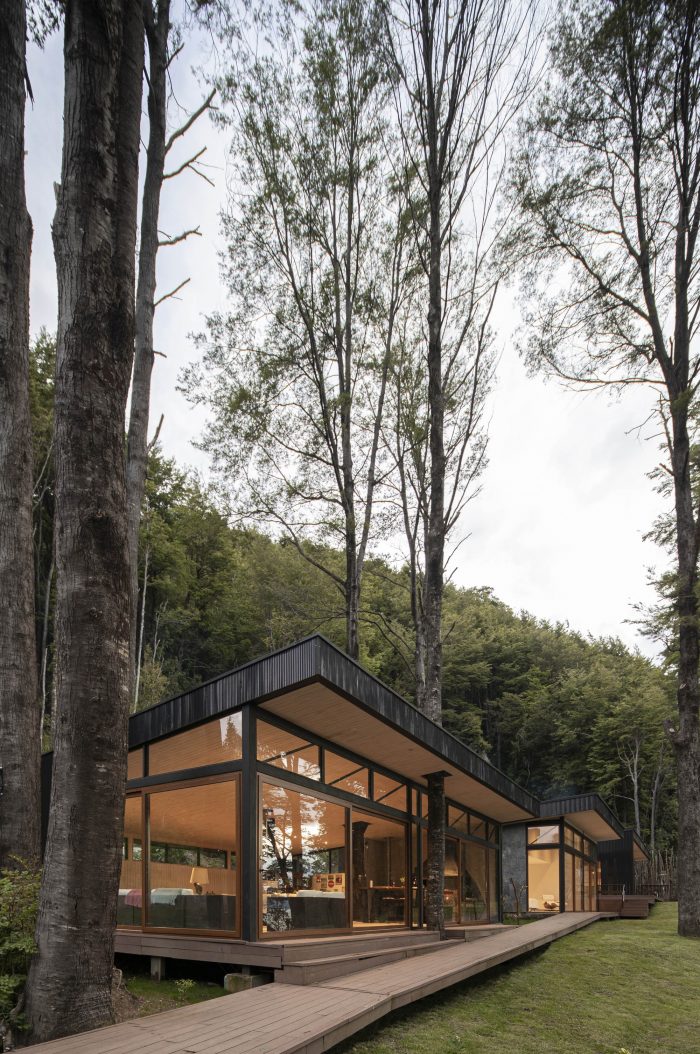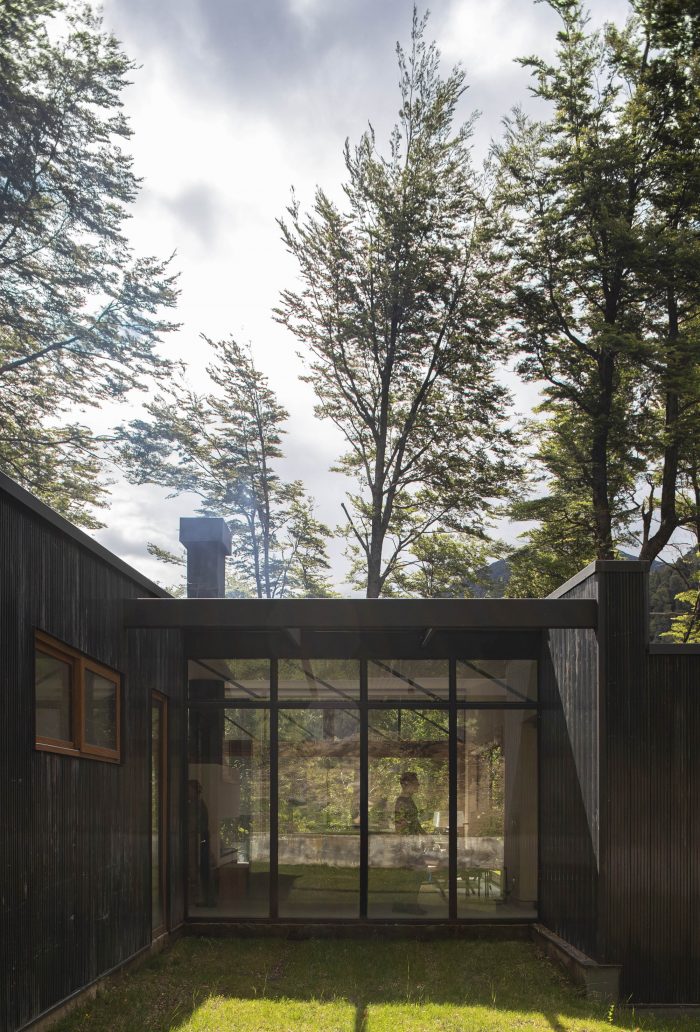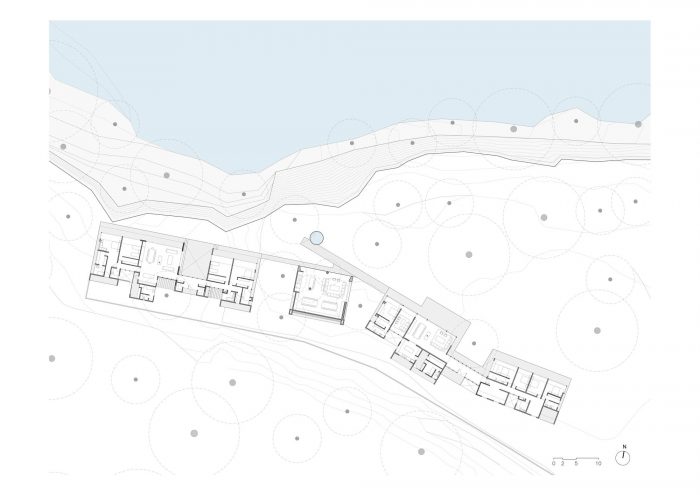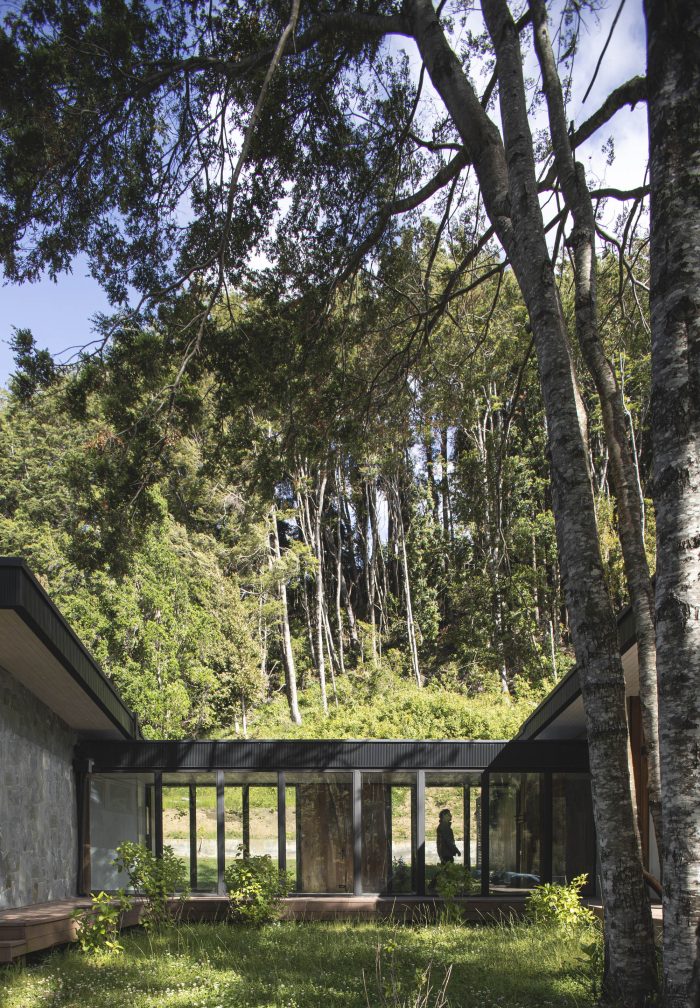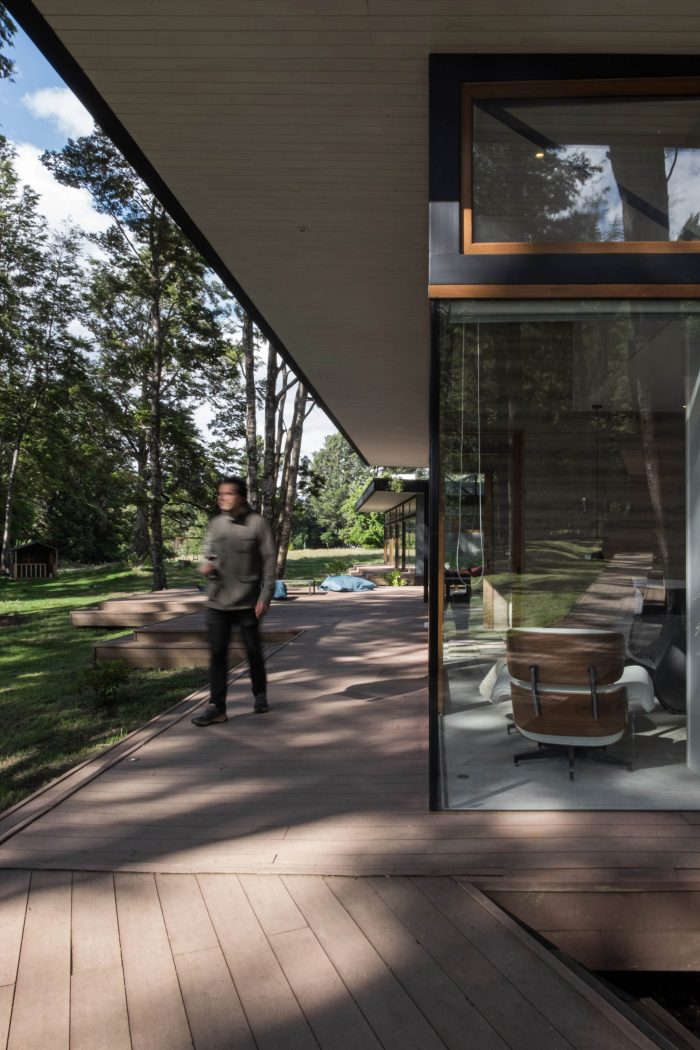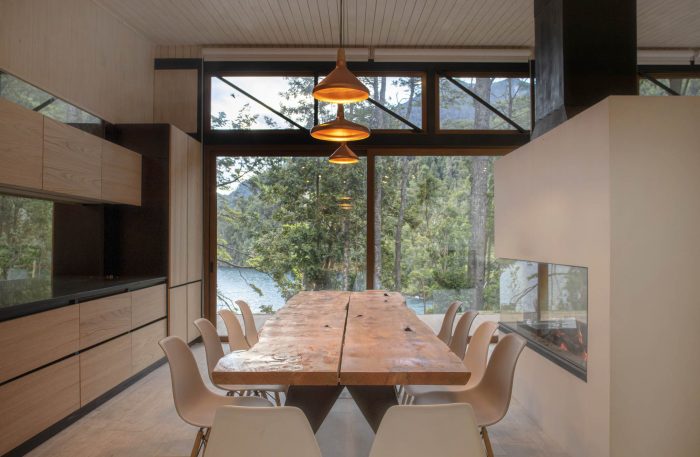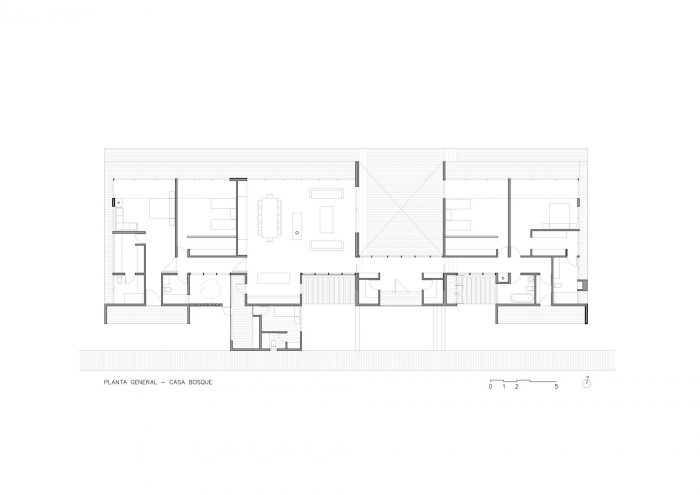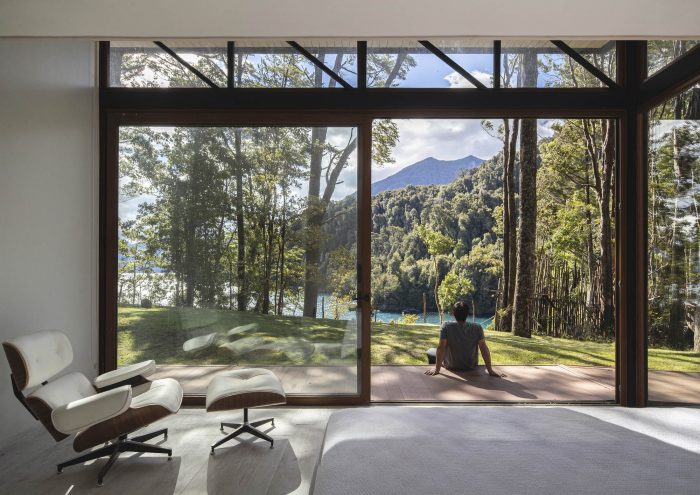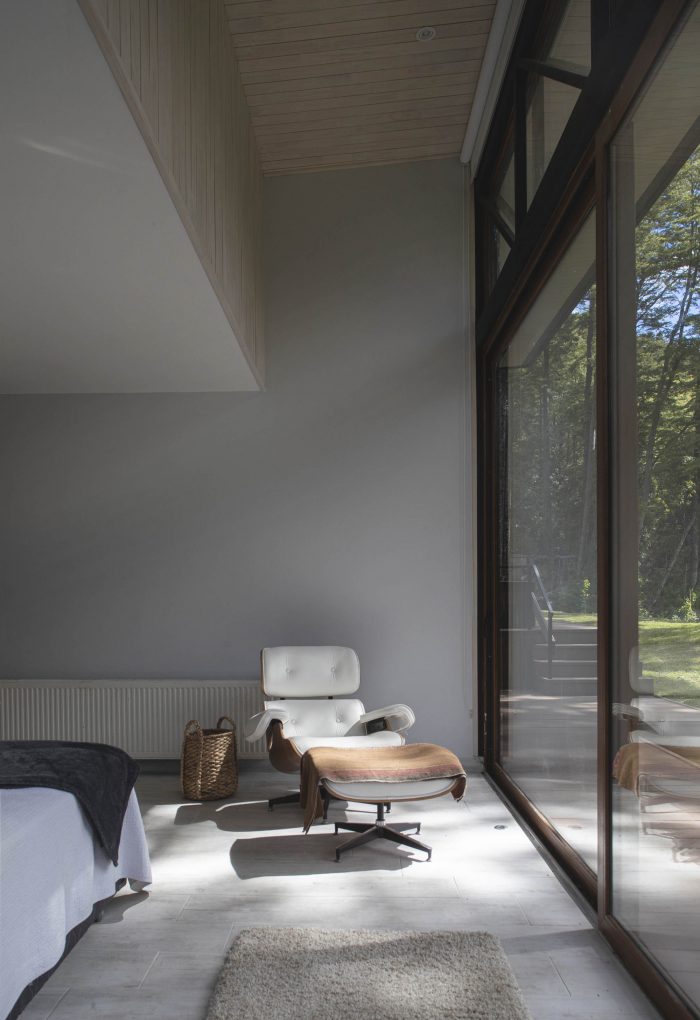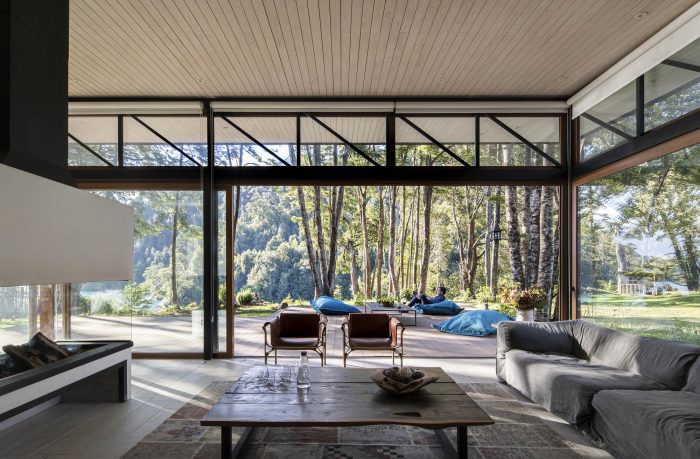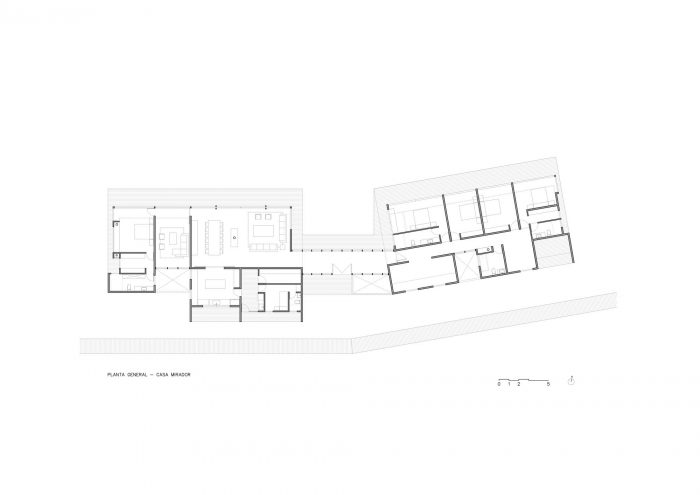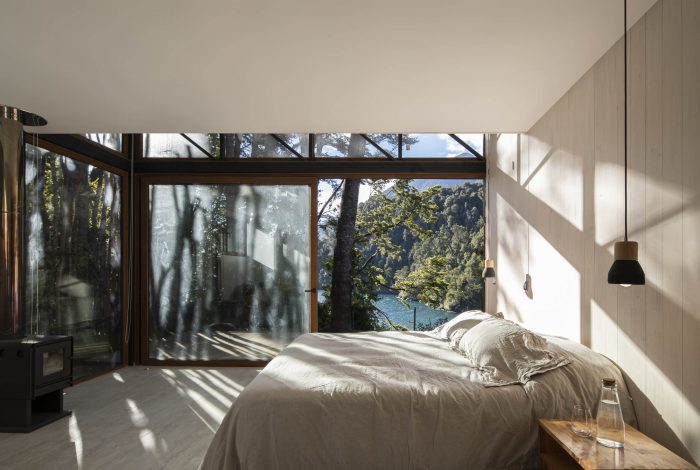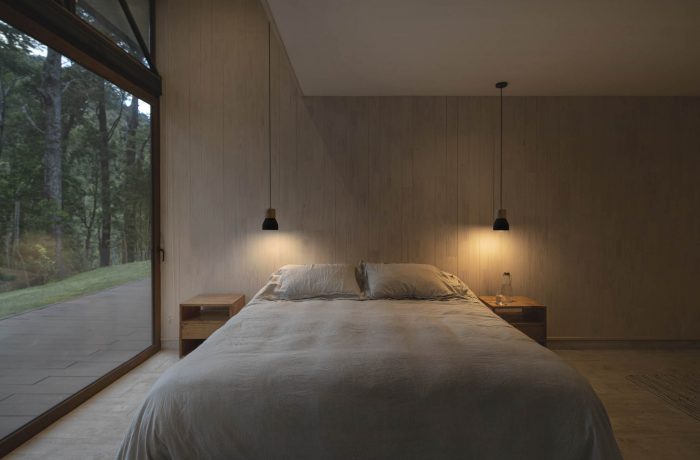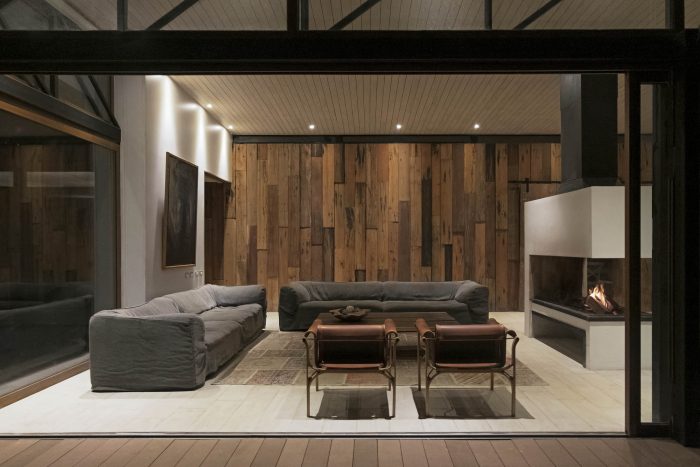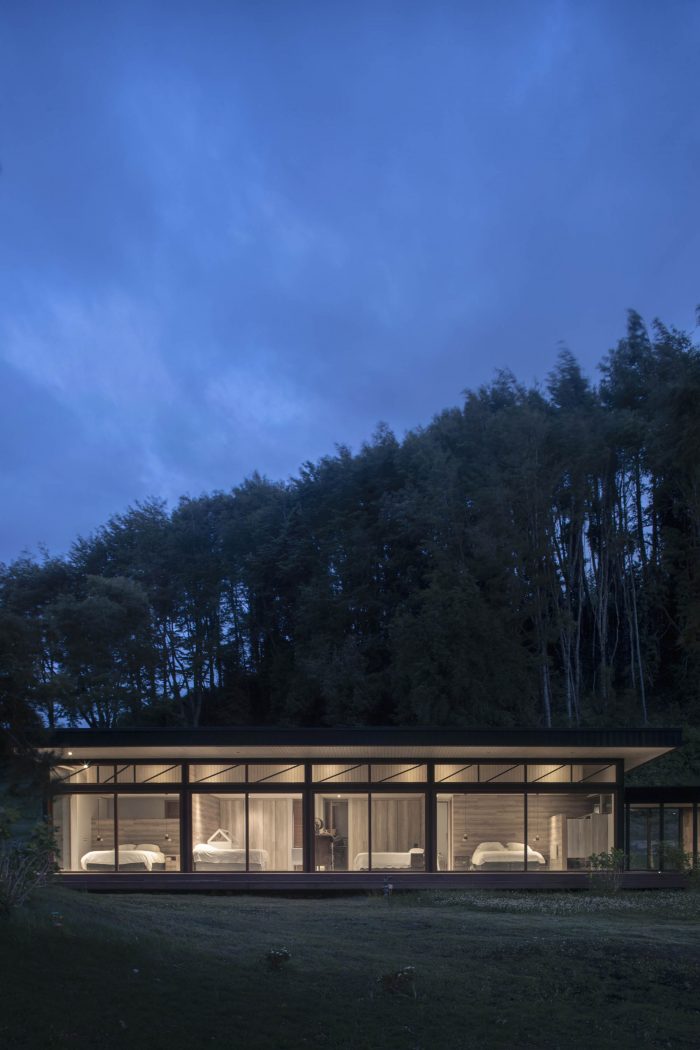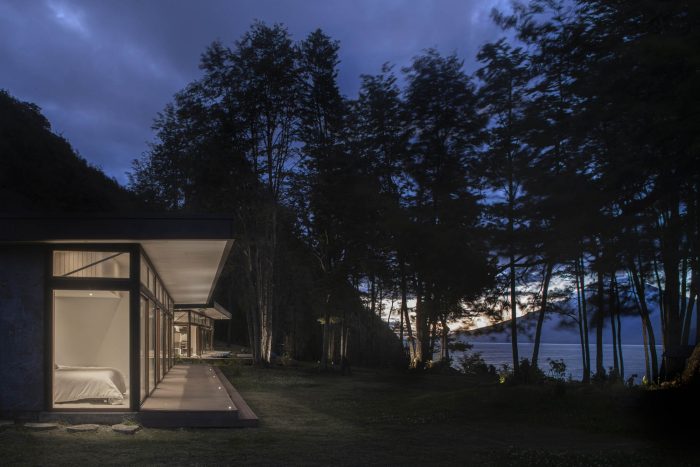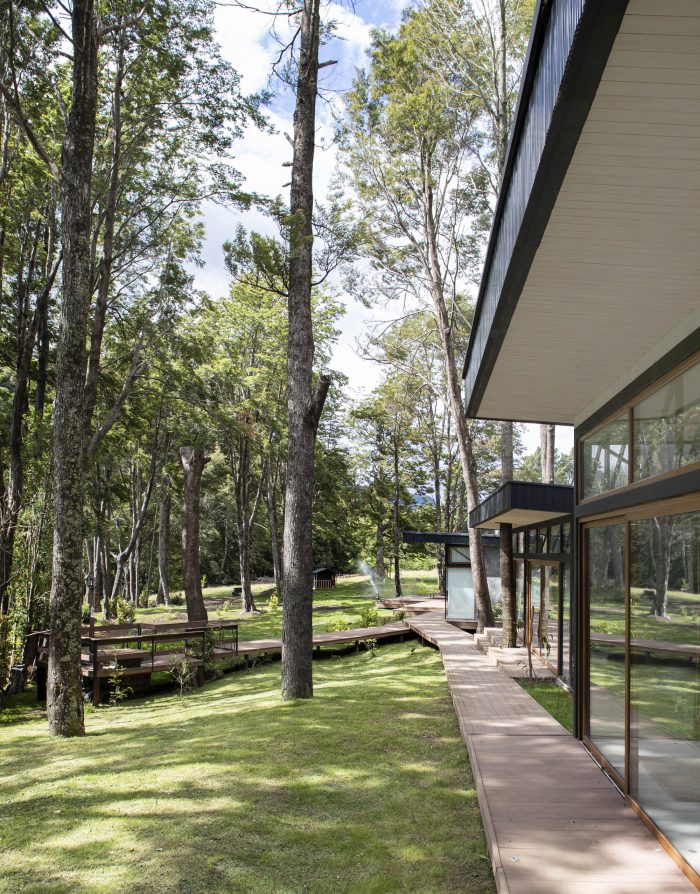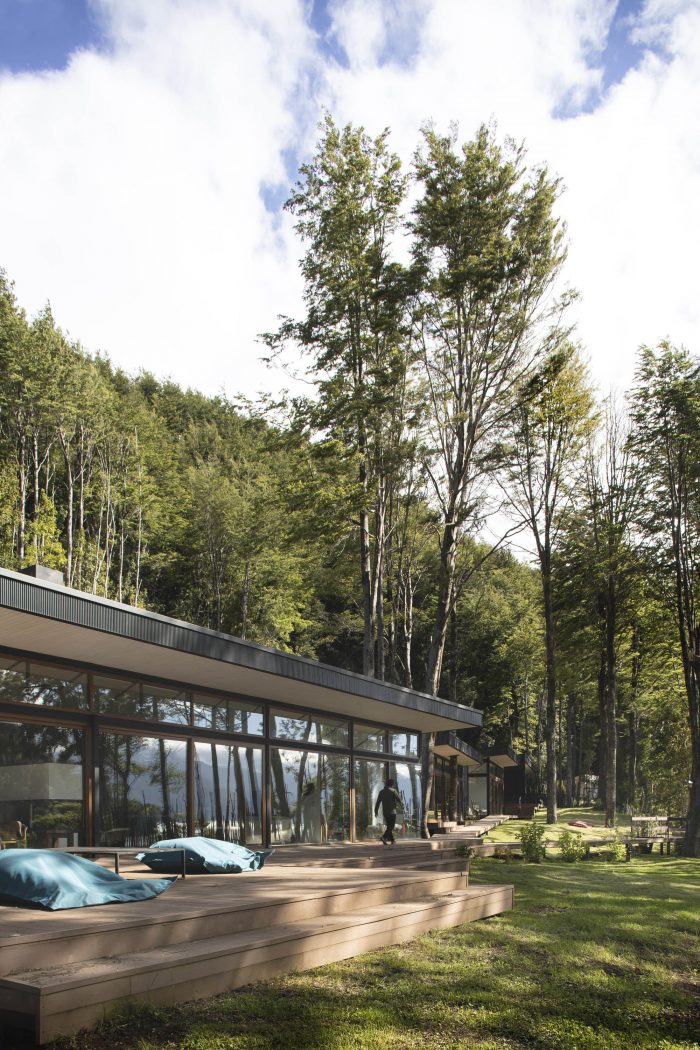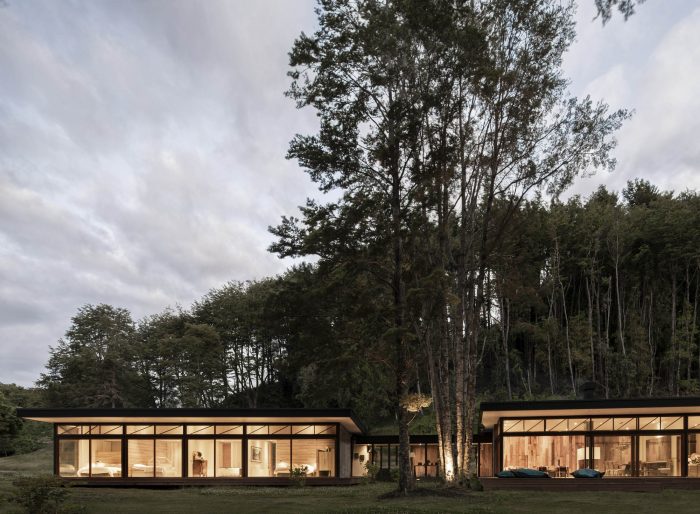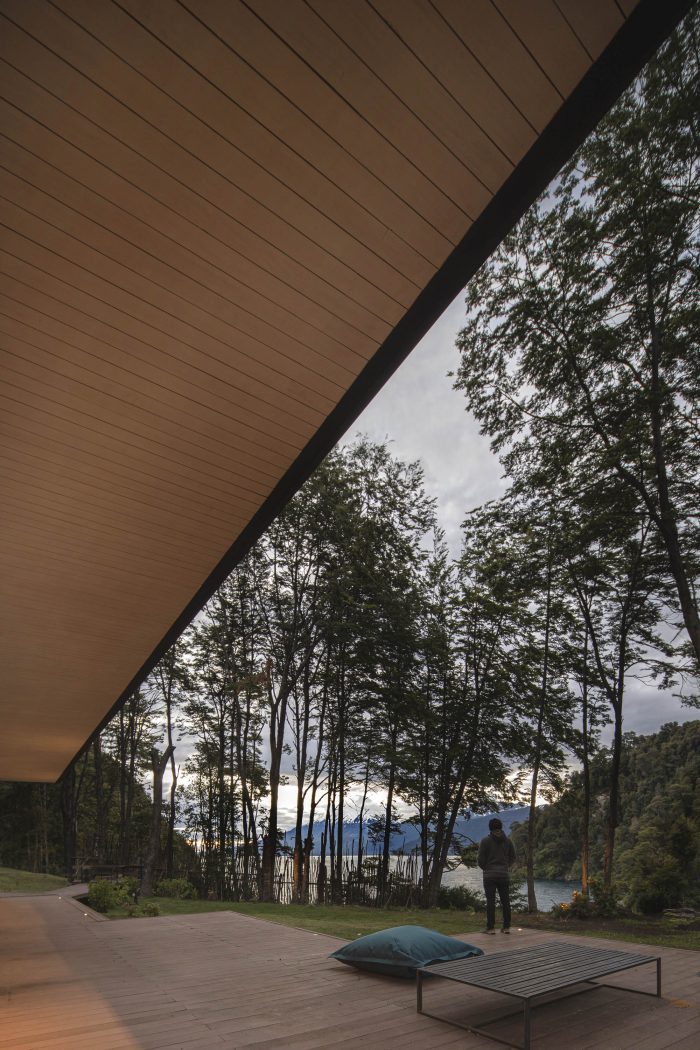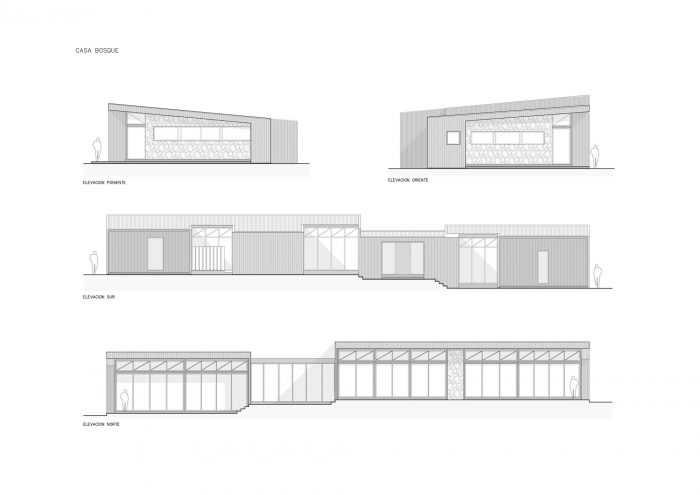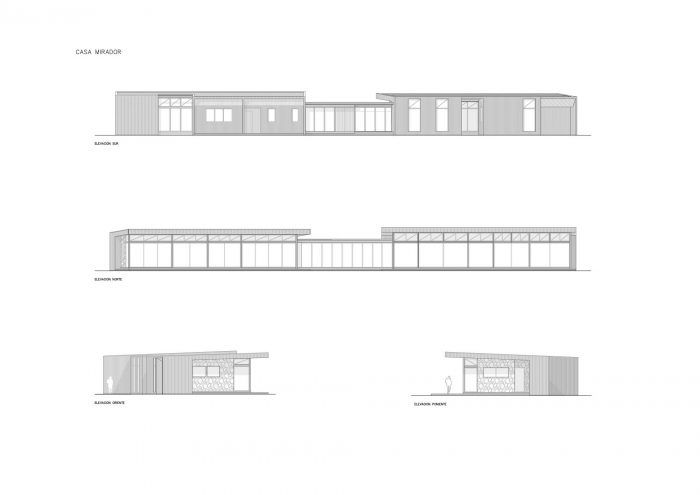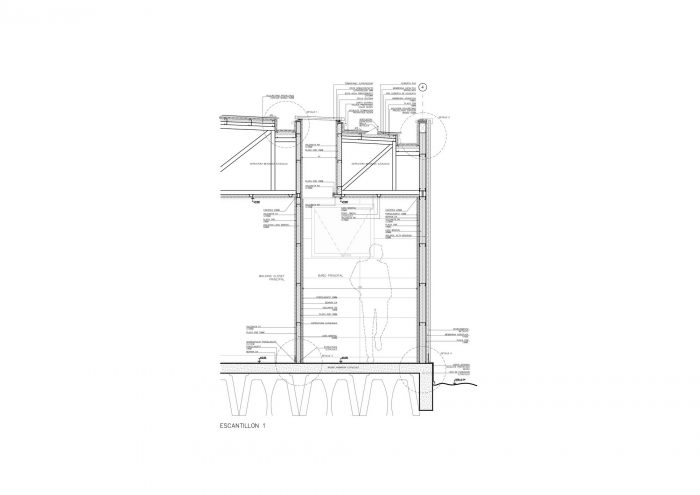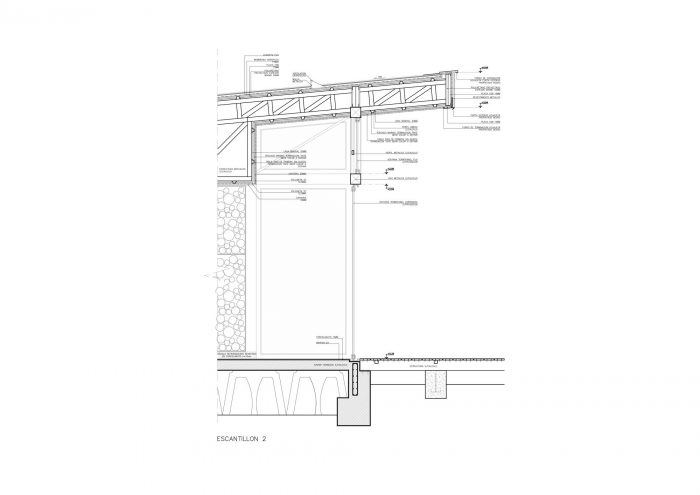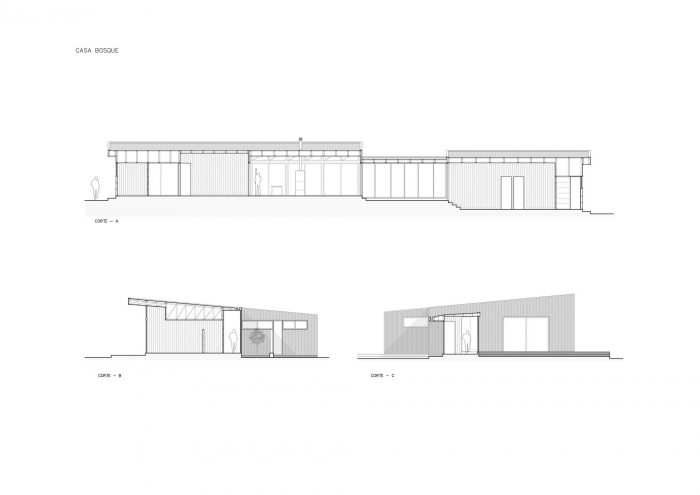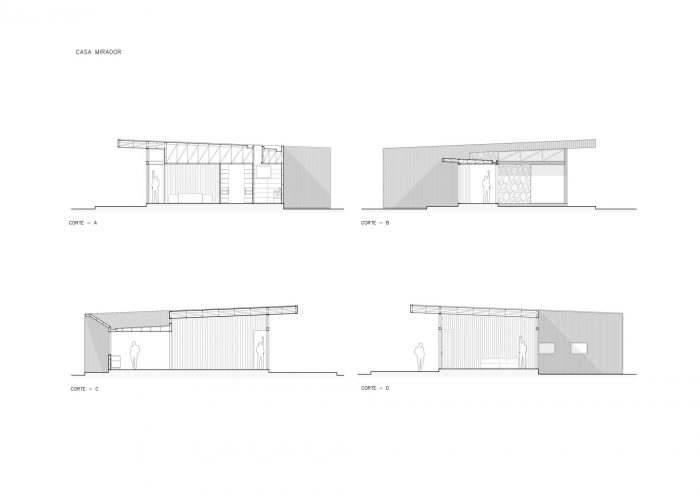巴塔哥尼亚建筑群位于智利南部一个湖泊的一个小海湾边。该湖的主要特点是没有陆路可走,只能通过船来实现。这意味着项目的建设是一个重要的挑战。
The Patagonia complex is located along a small bay in a lake in Southern Chile. The lake’s main feature is its lack of access by land, only made available by boat. This means that the project’s construction was an important challenge to carry out.
任务是为一个大家庭设计一套房子,所有的围墙和公共空间都面向湖和火山,这是该地区的标志性地理标志。
The assignment was to design a set of houses for a very large family where all the enclosures and common spaces face the lake and volcano, the area’s iconic geographic landmarks.
房屋的设计是为了在一天中尽可能多地利用自然光,创造出非常明亮的空间,即使是沉浸在有20多米高的树木的原始森林中。
The houses were designed to take advantage of as much natural light as possible throughout the day, creating very bright spaces, even though being immersed in a native forest with trees over 20 meters high.
地点和周围环境:一块平坦的土地,可以一览无余地看到湖泊和火山,朝向北方,以充分利用自然光,后面有一片遮蔽的原始森林,覆盖整个山丘,作为天然的墙,保护土地免受风和雨的影响。
The location and its surroundings; a flat land with an unobstructed view towards the lake and volcano, oriented towards the North, to make the most of the natural light, with a shady native forest behind it that covers the whole hill and works as a natural wall protecting the land from the wind and rain.
我们的策略是尽可能地减少对土地的干预。房屋建在单层,独立的体量被抬高,中间共享一个公共空间供家庭聚会。
The strategy was to intervene in the land as little as possible. The houses are built on a single level where independent volumes are raised sharing a common space in between for family gatherings.
该项目的主要挑战是其施工过程。该地区的材料和劳动力的供应和分配是需要克服的许多困难中的一部分。
The project’s major challenge was its construction process. The availability and distribution of materials and labor in the area were some of the many difficulties that were overcome.
设计的基础是一个分段式的金属结构,这便于运输和现场安装。设计采用了当地的材料,如用于天花板和墙壁的木质包层;用于结构墙的石材,以及用于外部的四边形包层,这种材料在面对该地区的极端气候条件时具有低维护成本和高耐久性。
The design was based on a meccano-style metallic structure built in sections, that facilitated its transport and on-site installation. The design incorporated local materials such as wood cladding, which was used for ceilings and walls; stone, used in structural walls and, quadroline cladding for the exterior, which has low maintenance costs and high durability in the face of extreme climate conditions in this area.
该项目对环境的影响很小,因为它能够通过安装在屋顶上的一系列光伏电池板产生所有需要的能量,并将能量储存在房屋内的电池中。整个电气项目被设计成在低消耗的LED设备上运行。
The project has a small environmental impact since it is capable of producing all the energy that requires through a series of photovoltaic panels installed on the roof, and stores the energy in batteries inside the houses. The entire electrical project is designed to function on low-consumption LED equipment.
Architects: Estudio Base Arquitectos
Area: 750 m²
Year: 2019
Photographs: Pablo Casals Aguirre
Lead Architects: Cristian Larraín, Gonzalo Ramírez
Design Team:Estudio Base Arquitectos
City:Patagonia
Country:Chile

